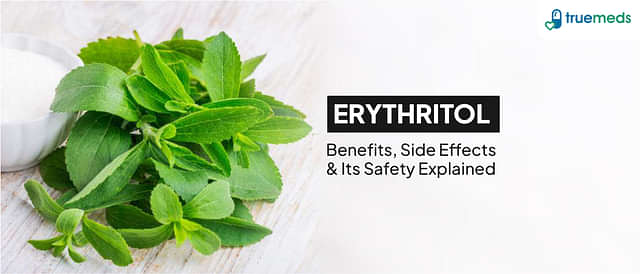Spasticity or Abnormal Muscle Tightness
Last updated on : 16 May, 2024
Read time : 6 min
What is spasticity?
Spasticity is a condition characterized by an abnormal increase in muscle tone or stiffness, which may interfere with movement or speech and may be associated with discomfort or pain. Damage to nerve pathways in the brain or spinal cord that control muscle movement can usually be the spasticity causes.
Severe spasticity is a disruption in muscle movement patterns that causes muscles to contract all at once. A complicated system generally controls muscular activities, allowing some muscles to contract (tighten) while others relax. Cerebral palsy, traumatic brain injury, stroke, spinal cord injury, multiple sclerosis, and other brain and/or spinal cord-related conditions can all have this condition.
Its causes are most commonly seen in the legs, but it can also affect the arms. Severe spasticity, on the other hand, can be beneficial for people who have very weak legs. The toughness affected by this can help them walk or stand.
For these people, according to its symptoms, the goal of this treatment should be to ease the pain while retaining the rigidity expected to activity. Prolonged spasticity can result in frozen joints, inability to function normally due to pressure sores
Spasticity types
(1) Intrinsic tonic spasticity:
The tonic component of the stretch reflex, which causes increased muscle tone, is polysynaptic.
(2) Intrinsic phasic spasticity:
Exaggerated phasic reflex action causes tendon hyper-reflexia and clonus. Tendon hyper-reflexia is an overreaction to tapping deep tendons.
(3) Extrinsic spasticity
Flexion spasms are the most prevalent form of extrinsic spasticity, caused by afferent input from the skin, muscle, subcutaneous tissues, and joints. Flexor reflex afferents mediate flexion withdrawal polysynaptic responses.
Spasticity causes
An imbalance in the impulses transmitted from the central nervous system (brain and spinal cord) to the body’s muscles can cause spasticity. Damage to the nerves in the central nervous system can result in spasticity symptoms such as muscle weakness and coordination issues. If the spasticity causes are known the choice of its treatment can be decided.
To coordinate muscle movements in the body, two messages are sent to the spinal cord. The first is a signal to tense or tighten the muscles. This message travels from the muscle to the spinal cord via nerves. These nerves communicate with the spinal cord about the muscle’s tone or tension.
The second message is to be more flexible or to reduce muscle tone. The nerves in the brain send this signal to the spinal cord. For strong, smooth muscle movements, the two types of messages must work well together in the spinal cord.
Severe spasticity symptoms can cause in people with cerebral palsy, traumatic brain injury, stroke, spinal cord injury, and other conditions affecting the brain and/or spinal cord. The brain damage in cerebral palsy spasticity occurs before, during, or after birth. This damage is irreversible and usually occurs in the area of the brain that controls muscle tone and arm and leg movements.
As a result, the brain of a person with cerebral palsy is unable to send the proper message about how flexible the muscle should be. Instead, the message from the muscle to the spinal cord, which signals the muscle to tense, is dominant. This is why spasticity causes people with cerebral palsy to have tense or spastic muscles.
Spasticity symptoms
Spasticity episodes can range from mild to debilitating and painful. Among these, its symptoms and signs are:
- Tightness of the muscles
- Stiffness of the joints
- Jerky involuntary movements
- Exaggerated reflexes
- Unusual stance
- Muscle spasms
- Muscle contraction restricts your strength and flexibility or inhibits your joints from fully extending
- Backache
- Moving difficulties
Severe spasticity symptoms can be triggered by a sudden change in position or movement. Other spasm-inducing factors include exhaustion, stress, high humidity, extreme heat, extreme cold, and infection.
Spasticity diagnosis
A comprehensive medical history will be taken, followed by an examination of posture, movement control, muscular strength, coordination, endurance, and spasticity for initiating spasticity treatment. The observation of muscular resistance to passive lengthening when relaxed is used to assess spasticity causes. When compared to other muscles in the body, a spastic muscle will exhibit increased resistance to passive stretch.
Diagnosis of spasticity symptoms may require the involvement of a multidisciplinary healthcare team. A physical therapist, physician, neurologist, rehabilitation physician, orthopaedic surgeon, and occupational therapist may be included.
It is essential to discuss the specific signs and symptoms that the patient is experiencing and any difficulties that may have arisen while participating in daily activities as a result of the symptoms. This information will be also helpful when muscle spasticity treatment is initiated.
Other spasticity diagnostic procedures
Electromyography may be used in some cases to determine specific nerve conduction velocities, which can aid in diagnosis.
Diagnostic imaging techniques may also be used to visualize changes to the head, neck, and spine and identify potential causes of muscular symptoms. Magnetic resonance imaging (MRI), for example, can be used to learn more about spasticity treatment which will help to know the nature of the underlying damage to the central nervous system.
Spasticity treatment
It must be treated in order to improve comfort, mobility, and independence. The goals of muscle spasticity treatment involve muscle relaxation, relieving pain and stiffness, encouraging optimal long muscle growth and development in children, and enhancing your child’s mobility and independence.
Physical and occupational spasticity therapy:
Your child’s muscle flexibility, range of motion, coordination, and strength can all benefit from physical and occupational spasticity treatment. Temporary casts or braces, therapeutic heat and cold, electrical stimulation, and biofeedback may all be used to treat this. Therapy can improve a child’s ability to perform daily tasks, allowing him or her to live as independently as possible.
Casting or bracing:
Spasticity therapy for restricting the spasticity causes such as involuntary muscle spasms and lessens muscle tightness.
Oral medications for muscle spasticity treatment:
These are taken in addition to other therapies or medications, such as physical or occupational therapy. Oral medications are only used when symptoms impair daily functioning or sleep. Typical medications include:
- Baclofen
- Imidazolines
- Dantrolene sodium
- Imidazolines Gabapentin
Botulinum Toxin (Botox) injections:
It has the ability to paralyze spastic muscles and prevent them from contracting. Botox is injected in small amounts into carefully selected sites determined by the pattern of spasticity.
Surgery:
For some patients, surgical spasticity treatment may be recommended. Rhizotomy is a medical procedure in which a brain surgeon cautiously isolates the nerves that send contractility messages to the affected muscles from the cable-like sensory nerves that run along the spine. To relieve spasticity while preserving other motor and sensory functions, the surgeon cuts the most abnormal of those fibres.
For the latest coupons and offers on the medicines, follow us on Instagram and Facebook
Disclaimer
Our healthcare experts have carefully reviewed and compiled the information presented here to ensure accuracy and trustworthiness. It is important to note that this information serves as a general overview of the topic and is for informational purposes only. It is not intended to diagnose, prevent, or cure any health problem. This page does not establish a doctor-patient relationship, nor does it replace the advice or consultation of a registered medical practitioner. We recommend seeking guidance from your registered medical practitioner for any questions or concerns regarding your medical condition.
Popular Articles
Recommended Articles
Recent Articles
Top-Selling Medicines:
...View more
Top-Selling OTC:
...View more
Company
About UsHealth ArticleHealth StoriesDiseases & Health ConditionsAll MedicinesAll BrandsNeed HelpFAQSubscribe
Registered Office Address
Grievance Officer
Download Truemeds

Contact Us
Our customer representative team is available 7 days a week from 9 am - 9 pm.
v3.7.10
Our Payment Partners



























































